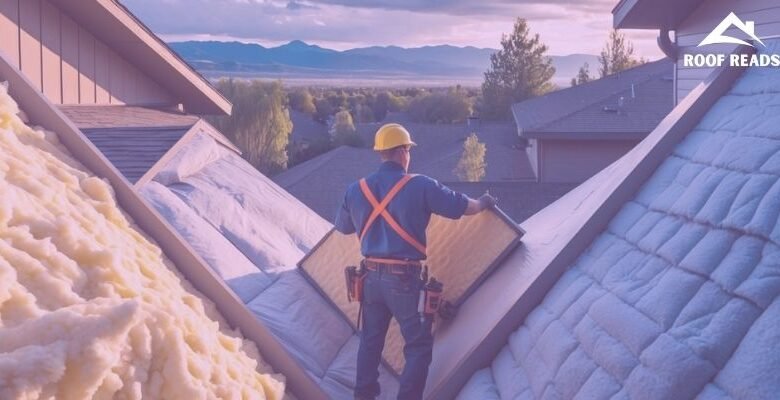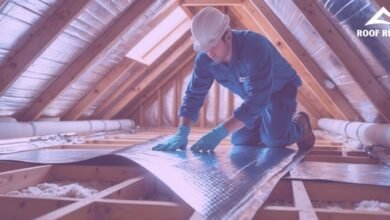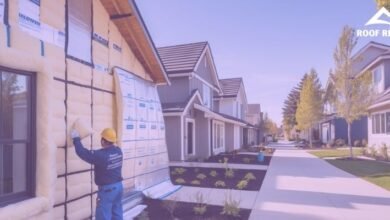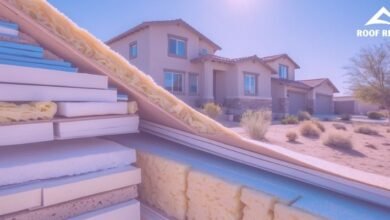Why Insulation Matters in Glendale’s Climate

Glendale’s mixed climate means homes face both hot summers and cool winters, making insulation an important part of keeping energy use balanced year-round. Proper insulation helps maintain comfortable indoor temperatures while reducing heating and cooling costs.
Insulation in a mixed climate like Glendale’s needs to manage heat flow both ways—keeping warm air inside during winter and blocking heat out in summer. This requires materials with the right R-values designed to handle changing weather conditions effectively.
Understanding how insulation works in this environment can help homeowners make smarter choices for energy savings and comfort. The right approach improves a home’s efficiency no matter the season.
Understanding Glendale’s Mixed Climate And Its Impact On Insulation

Glendale’s climate is shaped by desert heat and Mediterranean influences, creating unique challenges for insulation. The area experiences hot summers, mild winters, and distinct rainfall patterns. These factors affect how insulation should be selected and installed to maintain comfort and energy efficiency.
Desert And Mediterranean Climate Influences
Glendale, Arizona, sits where the desert and Mediterranean climates overlap. The desert climate brings very hot, dry conditions, especially during the day. This means homes need insulation that can reduce heat gain from the intense sun. Reflective materials and radiant barriers help keep buildings cooler.
At the same time, Mediterranean climate traits moderate temperatures during winter, bringing milder weather and some humidity. This overlap requires insulation to manage both heat and some moisture control. It also means insulation materials must balance resisting heat flow and preventing condensation.
Seasonal Variations: Hot Summers And Mild Winters
Summers in Glendale are hot, with daytime temperatures often climbing above 100°F. Insulation must limit heat entering homes to reduce cooling costs and improve comfort. Proper attic insulation, often with higher R-values, is important because roofs absorb the most heat.
Winters are mild, with temperatures rarely dropping below freezing. Insulation still plays a role in keeping homes warm at night but does not need to be as thick as in colder regions. This seasonal change means insulation should perform well both in summer cooling and winter heating.
Precipitation Patterns: January Rainfall Versus August Dryness
Glendale receives most of its rain in January, with occasional storms that increase moisture exposure. Insulation must resist moisture damage during this period to prevent mold and reduce heat loss.
August is typically dry, with very little rainfall. This dryness limits moisture concerns but increases the importance of keeping homes cool through effective insulation. Proper sealing and vapor barriers help protect insulation during wetter months while supporting cooling in dry months.
Critical Functions Of Insulation In Glendale Homes

Insulation in Glendale homes serves several key roles that affect energy use, indoor comfort, and long-term home durability. It helps control temperature swings, manage moisture, and supports sustainable building practices in the area’s mixed climate.
Energy Efficiency And Lower Utility Costs
Insulation reduces heat transfer through walls, attics, and floors, which is vital in Glendale’s hot summers and cooler winters. Higher R-values in insulation materials slow heat flow, helping homes stay cooler in summer and warmer in winter.
This reduces reliance on air conditioning and heating, leading to lower energy bills. Properly insulated crawl spaces and attics also prevent energy waste, making homes more efficient. Lower energy use means residents spend less on utilities year-round while reducing their overall carbon footprint.
Indoor Comfort And Humidity Regulation
Good insulation keeps indoor temperatures stable, preventing hot or cold spots. It also controls moisture by reducing air leaks that bring humid outdoor air inside, a common issue in Glendale’s climate.
By managing humidity levels, insulation helps prevent mold growth and improves air quality. This creates a healthier living environment. Soundproofing is another benefit, as insulation dampens noise from outdoors and between rooms, increasing overall home comfort.
Proper Installation And Sealing For Optimal Performance
Even the best insulation fails without proper installation and sealing. Gaps, compression, or improper placement reduce its effectiveness in Glendale homes.
Sealing cracks and openings around windows, doors, and crawl spaces is crucial to stop air leaks. Professional installation ensures insulation fits tightly, avoiding cold spots or heat loss. This enhances energy savings and keeps indoor comfort consistent.
Roofing Materials, Sustainability, And Climate Change Considerations
Roofing materials combined with insulation impact a home’s energy use and environmental footprint. Reflective or cool roofs reduce heat gain, easing the burden on insulation during hot Glendale summers.
Sustainable materials paired with efficient insulation lower greenhouse gas emissions. This is important as climate change increases temperature extremes regionally. Choosing the right insulation and roofing helps Glendale homes adapt to shifting climate patterns while conserving resources.
- Air Tight Insulation of Glendale
- 1415 Gardena Ave, Glendale, CA 91204, United States
- +18188732738
- http://airtightinsulationca.com/glendale-ca
Frequently Asked Questions
Insulation helps control the flow of heat in and out of a home. It affects energy use, costs, comfort, and how well a house handles temperature changes throughout the year.
How does insulation contribute to energy efficiency in homes?
Insulation slows down heat transfer. This means less energy is needed to heat or cool the home.
By reducing heat loss in winter and heat gain in summer, insulation lowers the workload on heating and cooling systems. This improves energy efficiency.
What are the benefits of installing insulation in a mixed climate region?
In mixed climates like Glendale’s, insulation maintains comfort during both warm and cool seasons.
It helps keep the home cooler in summer and warmer in winter without using extra energy. This saves money and reduces wear on HVAC systems.
Which types of insulation materials are best suited for Glendale’s climate?
Materials like rigid mineral wool board provide good thermal resistance and moisture control.
Fiberglass and spray foam are common choices because they adapt well to temperature swings. Proper installation matters more than material type for best results.
How does insulation impact heating and cooling costs in residential buildings?
Good insulation reduces the amount of heating and cooling needed. This lowers energy bills significantly.
Homes with higher insulation values tend to have smaller HVAC system requirements, which also cuts maintenance costs.
What insulation considerations are there for Glendale’s varying seasonal temperatures?
Insulation must handle a wide temperature range and some humidity.
Using vapor barriers and air sealing along with insulation helps prevent moisture problems. Proper wall assembly is key to balance comfort and durability.
How frequently should insulation be replaced or upgraded in a region with a mixed climate?
Insulation can last decades if kept dry and undisturbed.
Upgrades might be needed after 20-30 years or if homeowners notice drafts, uneven temperatures, or higher energy bills. Adding insulation during other home improvements is also common.




